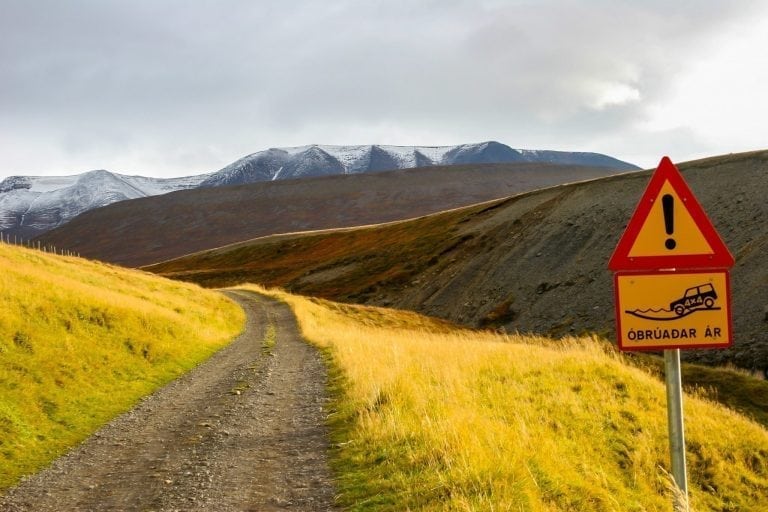A good driver recognizes his inability and inexperience. The best and bravest drivers are those who stop or go back before they drive into dangerous situation or conditions that they are unfamiliar with. In some cases it may be wiser to use public transport or serviced tours.
Following are some points to bear in mind when driving in Iceland. Even though you think you are a good driver, which you probably are, we highly recommend that you visit www.drive.is or www.safetravel.is for further information. Among other things we highly recommend that you take a look at the animated video with the famous Icelandic elf – Elfis – who is a specialist in road safety. However, following are the most important things to bear in mind:
FASTEN YOUR SEATBELTS
It is mandatory by law to have a safety belt on – both passengers and drivers. If one or more is not using safety belt, it may harm others in the car if an accident occurs.
NO OFFROAD DRIVING
It is illegal to drive off-road in Iceland. The reason is nature’s fragility. Sand deserts that seems to be lifeless, are not if you look closer. Be sure to stay on a recognized road or a trail. If the trail is not marked on a map – don’t go there.
ARE YOU CAUSING DANGER?
Don’t stop or park the vehicle on the road unless in a case of emergency. There is no photo or sight worth the danger of stopping on the road. Not even if there is little traffic.
ALCOHOL & DRUGS
Under NO circumstances, is it permitted to drive while under the influence of alcohol or narcotic substances.
SPEED
The speed limit in populated areas is usually 50 km/h. Speed limit signs are usually not posted unless it is other than 50 km/h, for example 30 km/h. The main rule in rural areas is that gravel roads have a speed limit of 80 km/h, and paved roads 90 km/h.
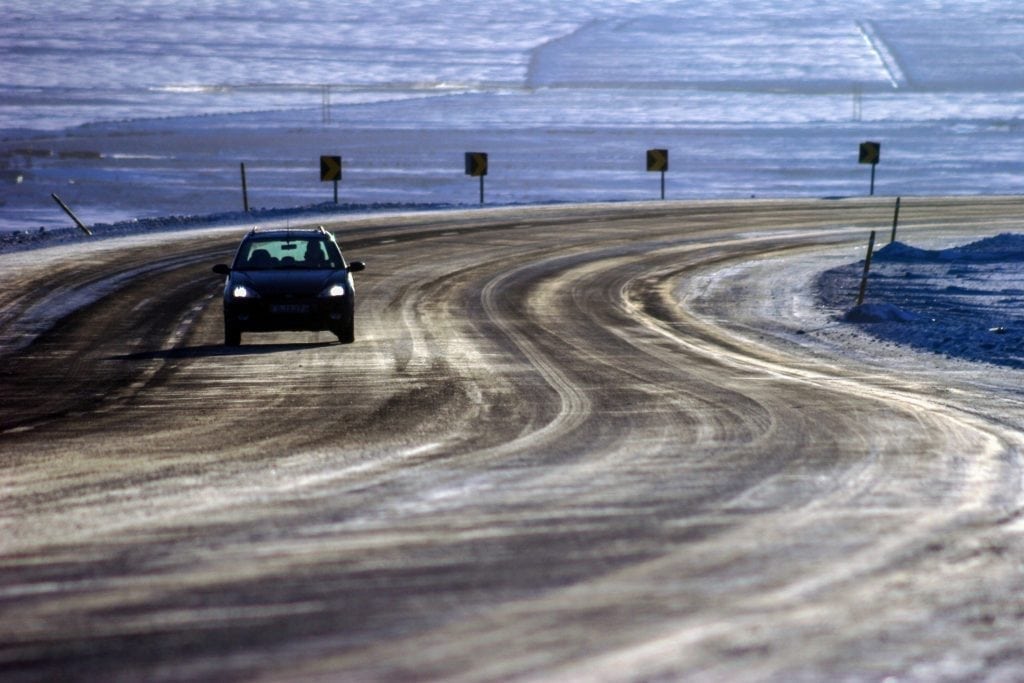
LIGHTS ON ALL HOURS OF THE DAY
Be sure to turn the driving lights on. You are required by law to turn on your headlights and rear lights all year, all hours of the day. This makes your car more visible and increases your safety.
WEATHER AND ROAD CONDITIONS
Foreign travellers requiring information on weather, road and driving conditions should visit the the Icelandic Road and Coastal Administration English website at www.road.is or call 1777. When driving in winter, roads can get very icy and your tyre grip gets vastly compromised. Please drive in accordance with the road surface and your own ability and experience.
 |
SINGLE–LANE BRIDGES There are many single-lane bridges on the Ring Road. This sign shows that you are approaching a single-lane bridge. Slow down and bear in mind that the actual rule is that the car closer to the bridge has the right-of-way. |
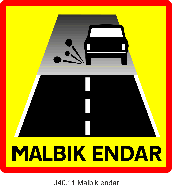 |
GRAVEL ROADS Rural roads, where a paved road suddenly changes to gravel, are common accident sites. This sign indicates that you are approaching such situations. It is very important that drivers reduce speed before the changeover to gravel. When driving on gravel roads, which are often quite narrow, it is important to show caution in turns and when a car coming from the opposite direction approaches. |
 |
Blind hills, where lanes are not separate, can be very dangerous, and should be approached with utmost caution. Keep the vehicle as far right as possible. |
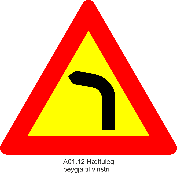 |
BLIND CURVES There are many blind curves in Iceland that test a driver’s skill and attention.
YOU STILL NEED TO REST AND SLEEP In the summer you will get up to 24 hour daylight. Please make sure you get enough sleep and rest as your body might be getting mixed signals as to whether it’s tired. |
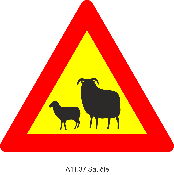 |
LIVESTOCK ON THE ROAD Sheep, horses and even cows can be in your path on Icelandic roads. Sometimes a sheep is on one side of the road and her lambs on the other side. Under these conditions, which are common, it is a good rule to expect the lambs or the sheep to run to the other side.
CLOSED MEANS IT’S CLOSED Closed roads are CLOSED for a reason, usually because of impassable snow on the road or other risks. If you pass a “Closed” (“Lokað” in Icelandic) sign you will most likely run into trouble which could endanger, not only you, but also those who have to come for your rescue. It can be costly in terms of time and money. |
This article is based on information from the Icelandic Transport Authority (ICETRA), www.drive.is

